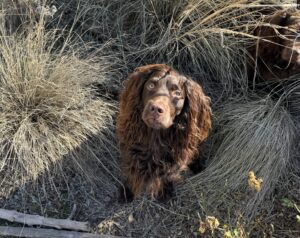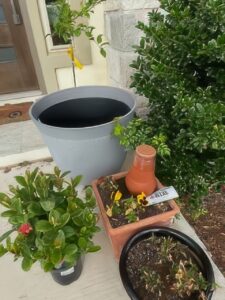Let’s jump out of the gate by declaring: this plant is not a cedar! That’s right, it is a juniper. Juniperus ashei In fact. Named for arborist and forester William Willard Ashe.
It is a tree that grows ubiquitously throughout our Central Texas region. Though I have long heard it described as an invasive species, the truth of the matter is it has grown here since the Ice Age (Pleistocene era) according to pollen records documented by our natural scientists. It is native, which makes sense of the robust ability to thrive in our environment.
Now, right up front, I will address the fact that we suffer yearly from Cedar Fever! The male trees burst forth with a plume of pollen during the winter months. Then on top of that there are a number of different species with different pollen release times which may carry over into the spring. I cannot get around that unfortunate aspect but this tree offers us so many positives that we should make room for it in our ecosystem.
The Texas Cedar has been thought to guzzle water resources in a greater amount than other trees. Really, the case is that it doesn’t take more water and in fact it retains water to a great degree that clear cut fields thusly aiding in drought tolerance. This has to do with the scale like needle formation, the dense, thicket heavy growth structure and the soil building under these trees. Our cedars can take a rocky limestone outcropping and through shedding of it’s needles, bark and limbs add structured soil that inhibits soil erosion from rain and winds.
So now the thicket has gradually built a soil layer. Here we see these trees encouraging the growth of more natives such as the Texas Madrone ( I really want one of these), Possumhaw Holly, Texas Red Oak, American Smoke Tree, Cedar Sage and more. Our Texas Cedar acts as a plant nursery, sheltering the young plants while their tap roots extend deep into the limestone creating water channels along the way. The Texas Cedar has a shallower root system which spreads out the water that does come its way into the duff layer and on towards the deeper rooted trees which causes a replenishment of the underground aquifer.
Texas Cedar spills across our landscapes providing a great resource for the natural fauna here. The Golden-Cheeked Warbler depends on the Texas Cedar thickets to build its nest by using the peeling bark of older specimens. The blue seed cones of the female trees provide food resources for a great number of birds, small mammals and deer during the winter.
My final consideration is this, in winter some wildlife can find a bit of warm shelter in the thickets. Namely many deer species and quail. I loved learning the wild turkey makes use of the female trees blue seeds during the winter as a food source. Each of these game animals are an important resource in our state. The Texas Cedar provides nesting and shelter for a great many migrating birds throughout the year as well.
The Texas Cedar should make a resurgence in our landscapes and public spaces. It is a fragrant and truly beautiful native deserving of recognition today.
References
- Texas A&M Forest Service: Trees of Texas. “Ashe juniper”
- Online: Wikipedia: “Juniperus ashei”
- Online: MAAS VERDE Landscape Restoration: Spread Love for Texas Cedar Trees: A Maas Verde Challenge.
- Online: Ladybird Johnson Wildflower Center: Plant Database: “Juniperus ashei”
- Online: Texas Natural Resources Server: “Cedar through the eyes of wildlife” Authors: Dale Rollins and Bill Armstrong







